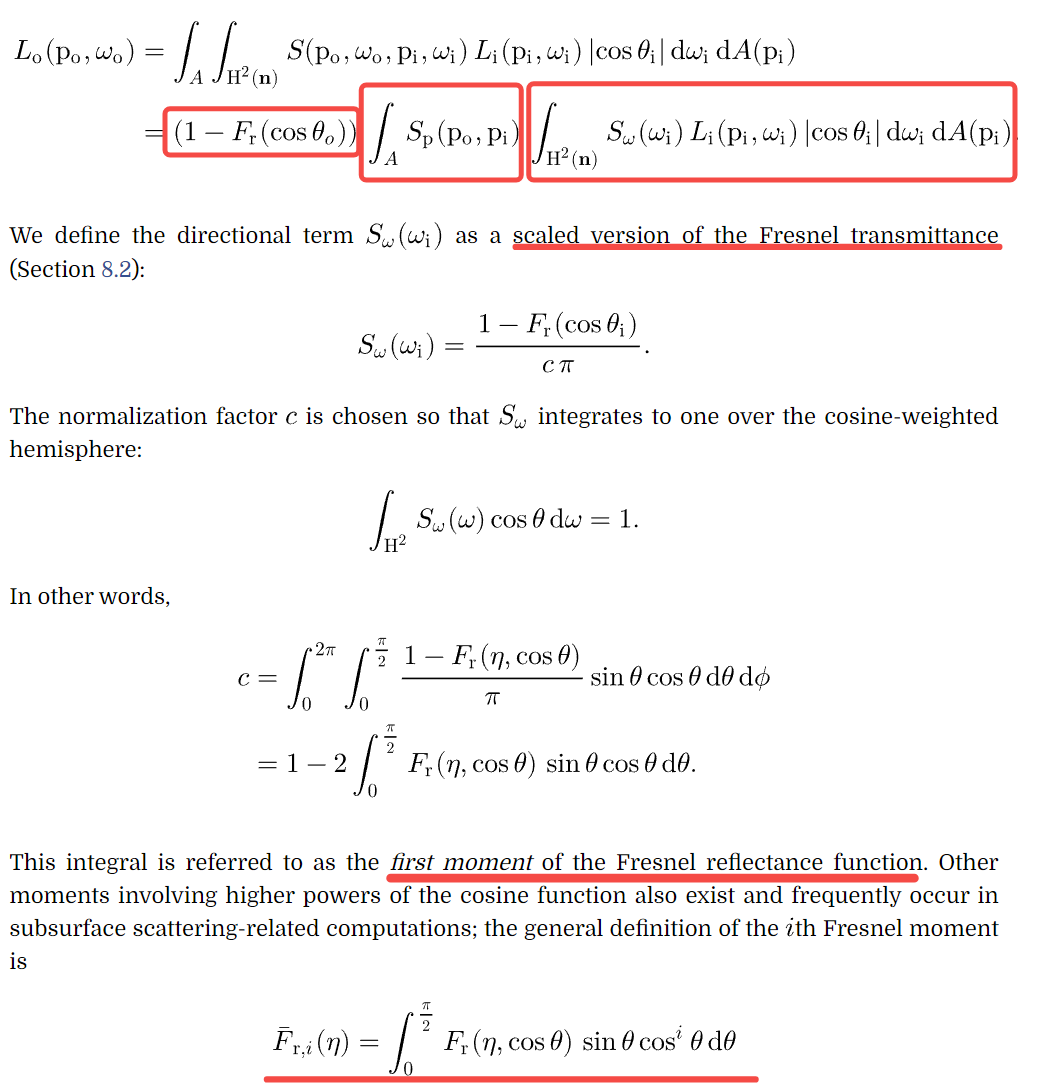PBR Chapter11 Volume Scattering
Introduction
- we have assumed that scenes are made up of collections of surfaces in a vacuum, which means that radiance is constant along rays between surfaces
- introduces the mathematics to describe how light is affected as it passes through participating media—large numbers of very small particles distributed throughout a region of 3D space
- volume scattering models are based on the assumption that there are so many particles that scattering is best modeled as a probabilistic process, rather than directly accounting for individual interactions with particles
- tracking paths with hundreds or thousands of scattering interactions quickly becomes impractical, it is preferable to aggregate the overall effect of the underlying scattering process in a function that relates scattering between points where light enters and leaves the medium
- contents
- basic physical processes
- medium
- BSSRDF
Volume Scattering Processes
- Absorption: the reduction in radiance due to the conversion of light to another form of energy, such as heat
- Emission: radiance that is added to the environment from luminous particles
- Scattering: radiance heading in one direction that is scattered to other directions due to collisions with particles
- Out-Scattering and Attenuation

- albedo

- mean free path
 theta 单位是 1/m
theta 单位是 1/m
- transmittance

- Beer's Law

- In scattering

Phase Function
- parameterized models (which can be used to fit a function with a small number of parameters to measured data)
- analytic models that are based on deriving the scattered radiance distribution that results from particles with known shape and material
- Henyey–Greenstein phase function

- meaning of g

- a weighted sum of phase functions

- data structure

- A key operation that Medium implementations must perform is to compute the beam transmittance
- the boundary between two different types of scattering media is always represented by the surface of a GeometricPrimitive

- sometimes we only need the shape for the boundary surface it provides to delimit a participating medium boundary and we don’t want to see the surface itself
- Material * that is nullptr , indicating that they do not affect light passing through them
- bsdf is null (not affect light transport) or not null
- GridDensityMedium



BSSRDF
- there is thus an implicit assumption that the index of refraction is constant throughout the medium


- separable BSSRDFs

- For high-albedo media, the scattered radiance distribution is generally fairly isotropic and the Fresnel transmittance is the most important factor for defining the final directional distribution
- Directional variation can be meaningful for low-albedo media; in that case, this approximation is less accurate
- Lo

- diffusion profile
- Second approximation, which assumes that the surface is not only locally planar but that it is the distance between the points rather than their actual locations that affects the value of the BSSRDF

- tabulated BSSRDF
- S_r

- extinction coefficient = 1
- fix the index of refraction and scattering anisotropy parameter



















